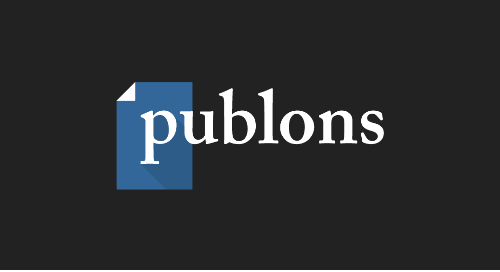maximizing-the-transition-to-open-access-your-questions-answered
April 06, 2021
| Click to explore by topic: | |
| Open access in general | |
| Transitional agreements, funding, and costs | |
| When to flip journals | |
| Submissions, quality, and reviewers | |
| Article transfer | |
| Open research |
The open access (OA) publishing landscape continues to evolve and create benefits and opportunities for journals and journal editors. In our recent webinar for editors, Maximizing the transition to open access, we looked at the various ways journals can meet the growing expectations around OA.
Our host, Serena Tan, Open Access Manager at Wiley, along with guest speakers Simon B. Eickhoff, Deputy Editor, Human Brain Mapping, Monica Fabiani, Editor-in-Chief, Psychophysiology, and Allen J. Moore, Editor-in-Chief, Ecology and Evolution, spoke about their own experiences in leading and collaborating with OA journals.
Our live audience asked many insightful questions, more than the time allowed for, so we’re answering your questions in full below.
 |  |  |  | ||||
Serena Tan, PhD [ST] Open Access Manager, Wiley. | Prof. Dr. Simon Eickhoff [SE] Deputy Editor Human Brain Mapping | Prof. Monica Fabiani [MF] Editor-in-Chief, Psychophysiology | Prof. Allen J. Moore [AJM] Editor-in-Chief, Ecology and Evolution |
Open access in general
Does Wiley fully support the transition to open access?
[ST]: We very much see open access as important in the future of scholarly publishing. We’re investing in that future through the many Transitional Agreements we have entered into and our acquisition of Hindawi in January 2021. We also see open access as part of a broader movement to make research and scholarly communication more open and efficient, and we’re actively driving forward other areas of open research. We encourage you as editors of hybrid (subscription journals with an open access option) and open access journals alike, to ask “How open is your journal?”
What is the value of publishing in journals/with a publisher? Could the open access journal be organized by a society or a university with the same results?
[MF]: There is a lot of value added in having a publisher — publishers ensure stable and consistent archiving, maintain efficient journal management systems, and ensure consistent quality and ethics. In addition, there is a pool of professional knowledge that is maintained by publishers but would be difficult to build and transmit through volunteers or individuals in societies. All of these benefits have costs attached if they’re going to be done professionally.
[AJM]: There is sometimes a fear that we’re not maintaining quality when we go open access because there’s a perception it’s based on a drive to make money. Yes, open access is a business model, but that explanation is not what researchers want, or need, to hear. What researchers really want to know is ‘what does it do for me, how does it facilitate my research and communication of my research’ and our job as editors is to promote this. Another fear is that if researchers publish in a journal that’s publishing thousands of papers, will anybody read their paper? The solution to this is to publish in a journal specific to their research. As an open access and sound science journal, we do have quality standards, and it’s not a question of ‘is this good enough’ but is it sound. The message is now starting to get through that open access journals are publishing sound science.
The other function of a journal, of course, is peer review. This is one of the biggest value-added parts of publishing. Yes, the “peers” are in universities and research organizations, and so in theory this could be organized at a society or university level. The key here is “the same result”. There is value in publishing in a journal where publisher reputation and ability to ensure quality peer review, quality editors, and editorial standards and this is generally recognized.
What is Wiley’s approach to diamond open access?
[ST]: Under the diamond open access model, the article is immediately and freely available online for all to read, download, reuse, and share and the author retains copyright. In this situation, publishing fees are covered by a separate entity such as a society, not-for-profit, or other sponsoring organizations and individual authors do not have to pay an APC (article publication charge). Wiley publishes a small number of diamond OA journals, but within our current portfolio, that model is not as common as the gold OA model under which authors pay an APC.
For journals that publish under the subscription model, authors used to hand over copyright of their text to the journal. What is the trend for open access journals?
[ST]: When publishing in a gold open access journal or when publishing open access in a hybrid journal, authors publish their work under a Creative Commons license. With Creative Commons licenses, the author retains copyright, and the public is allowed to reuse the content.
What is the evidence to support the validity of the ‘benefits’ to open access that you claimed in your opening statements? Have there been any systematic scientific evaluations to determine whether the claims for any of the benefits of OA or data sharing are true?
[ST]: Increased and immediate access to published research and the freedom around reuse can lead to increased impact, citation, and visibility for authors and journals alike and there have been several studies that have looked more closely at these trends.
Authors benefit from the increased discoverability and visibility that publishing open access brings. We recently compared the impact and performance of open access articles versus non-open access articles. Across the Wiley program we saw that on average, compared to non-open access articles, articles published open access were:
- downloaded over 3 times more often
- cited nearly twice as many times
- attracted 5 times more attention (as measured through Altmetric)
We have also seen increases in submissions and impact factors for journals flipped to OA (see this article for more details).
Transitional agreements, funding, and costs
I represent a US journal and the organization that owns the journal. We have many members at Iowa State University who publish in our journals. How will the new OA agreement with ISU affect our journals?
[ST]: The agreement will allow ISU authors to choose to publish open access, funded by ISU.
For clinical journals, there are no transitional agreements with hospitals only with universities that do not allow clinicians access. How can clinical journals survive the flip to OA?
[ST]: As with a journal in any other subject area, the decision to flip a journal to OA is done with several considerations in mind. If a journal would not be sustainable publishing as a fully OA journal, we will not flip the journal. For most subscription journals, however, authors still have the option of choosing to publish their research open access through a hybrid model.
Do country-wide open access agreements [transitional agreements] cover all Wiley journals or only specific journals?
[ST]: They cover reading access to all journals – some only fund open access publication in hybrid subscription journals, and some include funding to publish in fully gold open access journals. See our summary here for more information.
Can you tell us more about Projekt Deal?
[ST]: This article should be helpful: Seven things editors should know about Projekt DEAL.
How do you assist authors who have never submitted to an open access journal? How do authors know if their institutions have an OA agreement with a publisher?
[ST]: Wiley Author Services has lots of resources to support authors, for instance:
What is the impact on subscription price for an open access journal? Is it free online, but still costly to view the archive? What happens to the journal archive of articles that were published in the period before open access?
[ST]: All articles in an OA journal are available freely online and a subscription is not required to access OA journals. Similarly, all open access articles in a hybrid journal are freely available to access, read, and download. For journals that transitioned to fully OA from a subscription model, content published before the journal flipped to OA is published as “free access” (free to access but not published under a Creative Commons license) dating back to 1997* . Content published before 1997* is considered backfile content and is behind a paywall.
* Some society-owned journals may have different access arrangements for backfiles.
How are open access costs decided for each journal?
[ST]: Article Publication Charges (APCs) are the sole mechanism for financially supporting open access journals. APCs are set according to careful market analysis of the journal’s subject area including the availability of funding for APCs, community support for OA, and the positioning of the journal relative to competitors (titles with similar focus, scope, and content aspirations) and other titles within the relevant subject community. This makes sure that we set an APC that is not only appropriate for each title but also competitive and sustainable.
How are editors in an open access journal compensated for their editorial work?
[ST]: The business model of the journal doesn’t impact the editorial model. Editors of OA journals receive compensation for their work on the journal, usually in the form of an honorarium, as do editors of hybrid journals.
Not all authors have access to funds to cover Article Publication Charges (APCs). Is the move to OA contributing to increased inequality in research publishing?
[ST]: OA is not intended as a one-size-fits all approach. We see publishing continuing to operate within a “mixed model” ecosystem of OA journals and hybrid subscription journals (where author payments are not required for non-OA publication) for some time. Authors from all subject areas and geographies will continue to have quality journals through which to share their work. The world’s research and author communities are at different points in their journey towards sustainability of OA and our goal is to be there for them and serve their needs wherever they may be on that path.
We work with programs such as Research4Life that provide APC waivers and discounts to authors from low-income countries, but there are issues with coverage and more needs to be done to increase equity of access to the open access model. We’re also actively working towards reaching agreements with more institutions to make OA publishing a reality for more researchers and overcome barriers based in subject funding disparities. We have over 1400 Wiley Open Access accounts worldwide that offer centralized, discounted, APC payment opportunities for the authors covered under transitional agreements or individual institutional accounts. We monitor new funding models that attempt to solve the issue of inequity and continue to explore other ways we can support diversity, equity, and inclusion within our open access and open research program, including the development of our pre-printing platform Authorea. We know that there are unique needs around the world, so we don’t have a standard one-size-fits all approach—we tailor each agreement to best suit everyone’s needs.
In the old days you had to pay if you wanted to read a publication. Now you have to pay if you want to publish. That is a major shift that largely affects industry, assuming that academics get away cheaply again. Isn’t a probable consequence that there will be fewer industry submissions?
[ST]: Many industry-funded authors do have APC funding and many pharmaceutical companies, for example, are now also mandating OA publication. Our customers from industry also buy subscriptions to our hybrid journals as well. The transition to OA will actually benefit industry authors, as they will have greater access to our content without having to buy a subscription. There may be a small proportion of industry-funded authors that have no additional funding source to pay an APC, and they can still publish for free in our many hybrid journals that industry authors are already accustomed to publishing in.
When to flip journals
For what reasons do journals completely flip to open access?
[ST]: Journals decide to flip to OA for several reasons, most notably, to increase access to research published in the journal, help authors gain more exposure to their work, help researchers become compliant with grant requirements, and ultimately, for the journal to help lead in further accelerating research discovery.
When deciding whether to flip a journal to the open access model there are several factors that are considered. These include the subject area of the journal and availability of funding in that community to ensure that transition to open access can support a sustainable future for the journal and our publishing partners. Previous flips have shown that hybrid journals can perform successfully as gold OA titles after they flip, but we do not use flipping to fix underperforming journals. Journals must be performing well and continue to operate with growth strategies in place to be sustainable and successful for OA. Efforts to increase submissions, particularly from key regions supportive of OA, should be included as part of any successful OA strategy but a journal should not change its editorial standards and acceptance criteria. See this article for more details.
[SE]: There are probably many different reasons, but expectation/demand from the community we are catering to is certainly a big one. This is partially driven by a change in culture, partially also by expectations from funders. It seems that OA will likely become the norm in the future, so it is important that we are not being left behind in this trend.
I am interested in open access for my journal, but I can't see how it's affordable without country-level or university agreements in place? Aren't these negotiated beyond the influence of the editor? Is it possible to think about low OA costs for developing countries?
[ST]: The majority of our subscription journals do offer authors an option to publish articles OA via a hybrid model so all authors that want or need to publish OA in your journal can do so. However, when it comes to flipping a journal entirely into a gold open access journal, your Wiley Journal Publishing Manager can work with you to identify whether it is sustainable yet to flip your journal to OA. For authors publishing in Wiley's fully gold open access journals, Wiley offers waivers and discounts to corresponding authors based in low- and middle-income countries. Find out more on waivers and discounts on our Author Services site.
Submissions, quality, and reviewers
English is the current international language for publishing, but English is often not the mother tongue of submitting authors. With the high costs of publishing open access for many non-English speaking authors, especially those from countries without agreements with Wiley, how do we ensure that language does not become a barrier to effective peer review and publishing?
[ST]: Open access doesn’t have an impact on the peer review process – unclear writing and editing can be a challenge regardless of the business model of the journal. Wiley Editing Services provides English-language editing services and could be useful to share with authors if unclear writing or editing is an issue, see this recent article for more information.
[SE]: This is probably not a question specific to OA journals, but a more general discussion. There is a substantial bias in favour of native English speakers in all science publication. This needs to be addressed, but I would argue that the effect is particularly visible when it comes to "high-impact" journals, less something that affects the OA debate.
[MF]: It would be very useful to convolve costs associated with professional ESL editing into the costs of OA — this is paramount for transmission of information.
[AJM]: As with most journals, we do offer paid services to help with language and presentation. This is completely separate from the journal itself and voluntary. However, it is an added expense. To be honest, I’m not sure we’ve really solved this problem. It is hard to be inclusive and fair if there are language barriers.
Reviewers react badly to papers where the English is not standard. This is clearly a bias, unrelated to the science, and a prejudice. I doubt we are going to change reviewers. So, in searching for solutions here we need to address the issue before peer review. Beyond that – I hope others have more ideas.
Does the fact that authors pay for publication in open access journals enhance the possibility of articles being published regardless of quality? In other words, does payment decrease rigor of peer review?
[SE]: I don't think so, and at least at HBM, we don't have any evidence for a shift in the decision boundary. Probably the main reason here is that the IF plays a major role for most authors and honestly also the editors. So, there is a good incentive to stay selective. From the publisher perspective, this should be supported, as the reputation is critical for long-term viability and success of the journal.
[AJM]: Well, that depends on who is making the decision. This is why I prefer decisions be made by editors with academic affiliations, or that at least the Editor-in-Chief influencing journal policy has an affiliation separate from the publisher. It is clear there are journals that are being developed because people will pay APCs. So, it comes back to “quality” again. What a nebulous concept… The only obvious solution is transparency – transparency on who makes decisions, who chooses reviewers, who reviews, and how the work is used by the research community. Is it cited? Impact factor is never a sign of quality of individual papers (much like IQ, it is a population parameter, population-specific, and should never be used to compare between populations or evaluate individuals). If you want to know about the quality of papers, look at how they are used by the community. Obviously, this is where reputation of a publisher matters as well.
Have you noticed any trends with regards to retractions in OA journals?
[ST]: We haven’t observed any trends to suggest higher retraction rates in open access journals.
How do we engage reviewers? Some reviewers may refuse to review for an open access journal for free when the authors are being charged.
[SE]: Interesting take. What I am actually seeing is that more and more authors refuse to review for for-profit publishers. If anything, OA is a positive factor.
[AJM]: This is much less of a problem than you might imagine. People always turn down reviewing, and there are a variety of reasons. Frankly, what is more surprising to me is how often people agree to review.
The use of free labor to review research is a much bigger problem than OA. I don’t see anything that is specific to OA here. People choose not to review for certain publishers. They choose not to review certain authors. They may prefer society journals. OA is just one factor and I don’t see this as a common reason to decline to review.
[MF]: We have a Board of Consulting Editors who are among our best reviewers. This helps a lot.
How does open access allow for community peer review?
[ST]: Open access doesn’t affect the peer review model. There are various options of peer review that any journal can choose regardless of whether it is open access or not. For example, Transparent Peer Review is offered by several titles published by Wiley, representing both open access and hybrid journals.
Article transfer
How are the initial reviews handled during the transfer process? If the manuscript is moving from a higher impact journal to a lower impact journal, are authors being held to the standards/expectations from the initial journal? How many new reviews are solicited after being transferred?
[ST]: It is at the discretion of the receiving editor whether they choose to send the article out for further review or whether the existing reviews are sufficient. Along with publication speed and ease for authors, a major advantage of article transfer is that it helps to relieve the burden on often over-stretched reviewer pools so when the receiving editor feels the transferred reviews are sufficient that is great for the community.
[AJM]: We treat each paper as an individual submission, regardless of where it comes from. The reviews are treated as new reviews. We do not just take what one person, the editor (or associate editor) thought about a paper. Our philosophy is different from the referring journals – they worry about novelty, page limits, gatekeeping. They are looking for reasons to reject a paper and one negative review can outweigh any number of positive reviews. Our philosophy is different – we look for reasons to publish, and so the reviews are guides as to changes that are needed to better communicate the authors’ ideas or clarify what and how something was done. If there are problems that cannot be fixed, we reject the paper. If there is no reason to publish the work, we reject the paper. But because we have not had to search for reviewers and wait on the review process, we can spend that time working with the authors to make sure their paper is appropriately presented. We do not worry if a paper will ultimately be highly cited. We simply want to present solid science and let the community decide what is “novel” or “high impact”, not one or two people.
We almost never solicit new reviews. We do not take into consideration where a paper was first submitted. We simply treat the paper and the reviews as new information and work from there.
One major difference in a transferred review is that I can choose to make the reviewers anonymous to me. This has led to an interesting revelation – I see reviews where I disagree with the negative comments. I sometimes have the response the authors must have – but the paper addresses that; how did you miss it? So, in some cases the reviews are treated with less bias because we didn’t pick the reviewers.
A problem with article transfer that I once experienced was that it was not better than a new submission - as the layout and reference style had to be changed anyway. Why should editors encourage article transfer? What is Wiley doing to improve the experience?
[ST]: We recommend that all journals, especially journals that receive transfers, adopt free format submission to reduce submission barriers for authors. Authors are not required to format their manuscripts upon submission but will be asked to do so if their manuscripts are accepted. Another advantage of having a manuscript referred to another journal is that any peer reviews an author has received at the original journal travel along with the manuscript to the receiving journal. This helps speed along time to publication by reducing the need for undergoing additional rounds of review if the receiving journal’s editor deems the reviews sufficient to make an informed decision. Furthermore, this mechanism also helps reduce “reviewer burnout” by avoiding the potential for the same reviewers to be asked to re-review the same manuscript after having been submitted to another journal.
Is there evidence that article transfer is working on your journal? Is it true that editors receiving transferred manuscripts have the time to support authors in multiple revisions, and how can editors manage this time effectively?
[AJM]: The two main advantages of article transfer are time and reviewers selected by others and not the deciding editor. On my receiver journal, we don’t have to find or chase reviewers [other receiving editors/journals may seek out additional reviewers]. The reviews we receive alongside referred papers are outstanding and really informative to the author. We do occasionally catch bias and disagree with reviews – that is the advantage of being independent from the choice of reviewers. We can therefore take that time and devote it to the paper instead. Especially if it’s a student paper, they want fast turnaround and for that paper to be accepted. Working closer with authors in such a positive way is enjoyable as an editor, and our time is spent actually editing, rather than processing or chasing reviews.
Evidence that this is working comes from the number and regularity of positive emails we get from authors. This is unique in my experience. As an EiC of a society journal prior to taking on this role, I don’t remember many emails thanking me for helping an author.
[MF]: On my journal (Psychophysiology) we have seen several benefits to referring articles. Approximately one-third of the authors we refer take on the transfer offer, which is more than we initially expected. That number is growing, and we are using the system with more confidence as we believe it is achieving what we were hoping for.
The process has been seamless; our authors have already submitted their papers which takes time and effort, the metadata has been input, and the papers have been reviewed. If major revisions are needed after the reviews and the paper is rejected and referred, the receiving journal does not require the same time pressure and expenditure. This allows for the editor to nurture the author and their paper, especially with student papers. For me, it means having the chance to give that student more education in crafting their paper.
Could you please explain "editorial triage"?
[MF]: This means that submitted articles are read by one or more senior editors before being sent to reviewers. If the article is judged unlikely to make it through the review process successfully, it is rejected at this stage with a review stating the reason. This saves time for the authors. They can take advantage of the senior editor comments to submit to another journal. Or if the issue is lack of fit with my journal, then the article may be referred to a more appropriate journal.
Open Research
Would Human Brain Mapping eventually require that all accepted papers have their data and code in public repositories?
[SE]: I would hope so, but it is a long road until we get there.
You mentioned an issue with experimental replication. Please could you elaborate on this?
[SE]: Replicability is a general concern in our field. But this is something that is difficult to address at the level of a journal beyond measures already taken, e.g., to encourage the submission of replications and null-results - and their positive consideration. Registered Reports are a next step that is gaining a lot of traction but also has critics. Maybe more important than replicability is reproducibility, which comes down to data and code availability.
How do you see preprint servers impacting your journal?
[AJM]: Preprint servers are only positive. The sooner we get research into the community, and available, the better. The final publication, of course, then has the added value of peer review and revisions based on the peer review. This makes peer review even more important. But this mixed model, along with education about what a preprint represents (the unreviewed presentation of ideas), is a very positive development.
[MF]: This seems fine — the accepted version is usually quite a bit different from the original version.
[SE]: At least in our field I don't foresee any negative impact, mainly because journal publications (and also journal IF) are and remain key metrics for hire, tenure, and promotion. This could change in the future, but I don't see it happening soon.
Do you have ways to facilitate transfer of preprints to your journal?
[ST]: As the majority of content starts as a journal submission (with an increasing number of authors opting to preprint their manuscript around that time), rather than starting first as a preprint, Wiley is focused on journal-integrated preprint solutions. Our Under Review service makes it seamless for authors to preprint at the time they submit to a journal. We’re also testing integrations to facilitate transfer of preprints to journals and are in the process of launching an integration with bioRxiv for a small pilot of ~10 journals.
Wiley has also developed Preprint Alerter, a tool which allows editors to easily monitor major preprint services for research applicable to their subject area for commissioning or outreach activities.
Thank you to our contributors:
- Serena Tan, Open Access Manager, Wiley,
- Simon B. Eickhoff, Institute for Systems Neuroscience, Heinrich-Heine University, Düsseldorf,
- Monica Fabiani, Professor of Psychology and Neuroscience, University of Illinois at Urbana-Champaign,
- Allen J. Moore, Professor of Evolutionary Genetics, University of Georgia,
- and other Wiley colleagues for their input and reviews.









